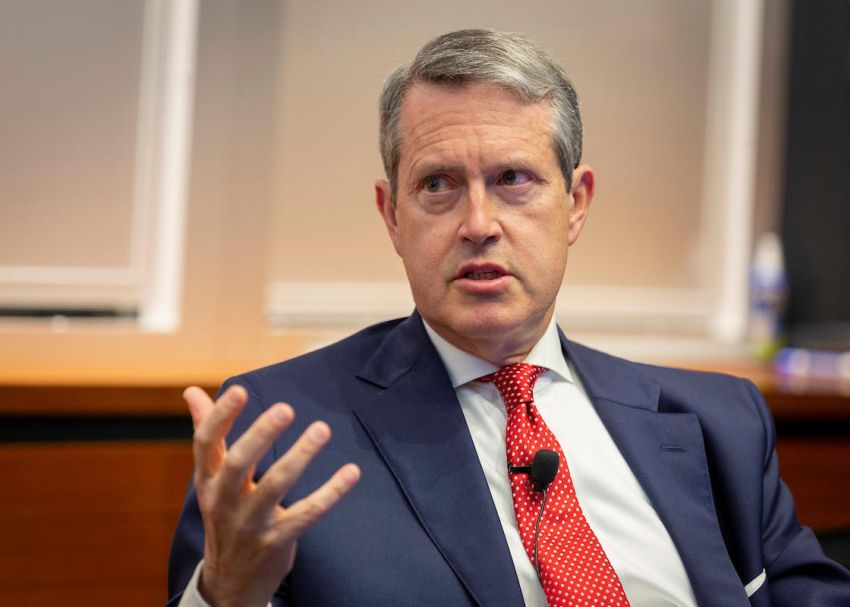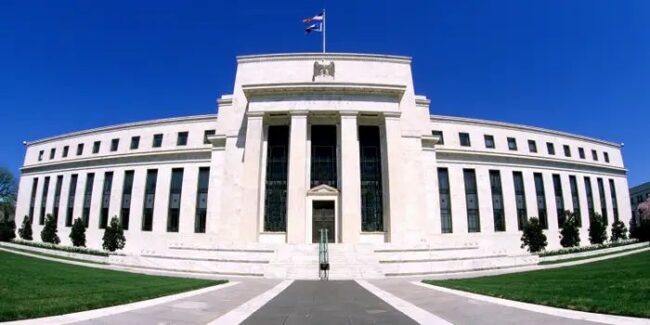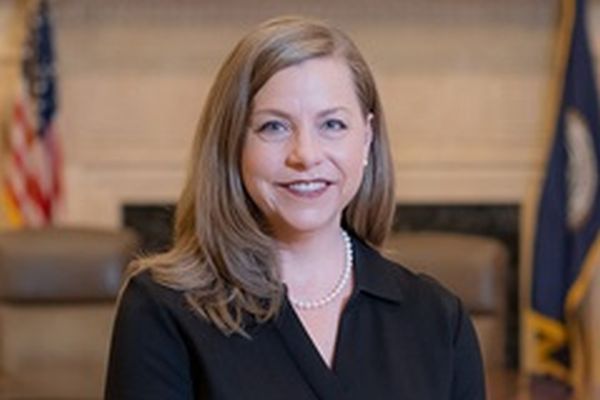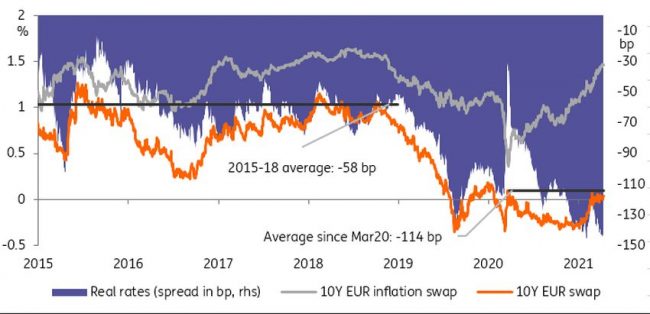Governor Randal K. Quarles
The FSB stands at an inflection point. From here, we can look back at the events and actions of the last 18 months to see what we have learned. And—in light of that—we can then look forward, to see how the FSB will address ongoing and future financial stability challenges. All of the researchers attending this conference are no doubt doing something similar—looking back to learn so that we can better prepare for the future.
Living through the events of last year was an experience of near chaos. The world had stopped functioning the way it should, leading to unexpected—and in some cases almost unimaginable—outcomes, including in our financial markets. As we got some distance from the turmoil and studied pieces of the problems, patterns started to emerge. We began to appreciate nuances that we hadn’t appreciated in the moment. This conference is being held just a few blocks from where Picasso’s Guernica hangs, and in preparing these remarks I reflected on the first time I saw the painting, almost half a century ago—at that time at the Museum of Modern Art in New York, before Picasso would let the painting come to its home in Spain. One’s first look at Guernica is chaotic, dizzying, viscerally frightening, hard to comprehend. But after looking about it, thinking about it, living with one’s memory of the images for some time (in my case, I still think I’m understanding new things about it after 50 years), we start to see the story told by the bits and pieces.
The economic and financial shock created by the outbreak of COVID-19 and the global imposition of attendant containment measures—what I typically refer to as the „COVID event”—was precisely the kind of global crisis that the FSB was created for, and—as was envisaged—the FSB has played a central role. But our work is not finished. As we emerge from the acute phase of the COVID event, the FSB’s focus is shifting from crisis management to addressing forward-looking issues.
At an event last October, I spoke about some of the lessons of the COVID event for the U.S. financial system. Today, speaking as FSB Chair, I’d like to reflect on the role the FSB played. How did we respond in the crisis? What lessons can we draw? And where can we sharpen our focus for the road ahead?
Reacting and Responding to Crisis: Leveraging Cooperation to Ensure Stability and Contain Spillovers
The period between the Global Financial Crisis and the onset of the COVID event provided some calm for an organization that was built to address crisis. But the FSB was not idle. During that decade, FSB members focused on enhancing the global financial system’s resilience to shocks. Together, we strengthened our respective frameworks for analyzing vulnerabilities and monitoring risks. We developed measured policy responses to address those vulnerabilities and risks and assessed reforms made in the wake of the Global Financial Crisis. FSB members have been working alongside one another for since 2009 to improve tools for resilience. Just as important, members have built trust among themselves, been transparent with their actions, and coordinated with each other. This has all been vital in preparing us to work together in the unprecedented and unpredictable landscape of the last 18 months.
Early in the crisis, as the COVID event unfolded, the FSB provided a forum where members met regularly—some part of the FSB was meeting almost constantly in the early weeks—to exchange information about the trajectory of the COVID event, policy responses across member jurisdictions, and areas where the potential for spillovers needed to be addressed. Navigating a crisis is no small feat. As we, collectively, moved through the experience, we did not have much opportunity to share details on how we worked together to forge a coherent path. In outlining the many steps we took together, I hope to provide an anatomy of coordination through crisis.
Given the openness of information sharing, FSB members were able to quickly identify areas of concern that required action. We used real-time input to focus on four critical nodes of the global financial system: financing of the real economy; access to U.S. dollar funding; meeting financial intermediaries’ liquidity demands; and monitoring counterparty risks. This open communication and real-time monitoring improved policymakers’ clarity around executing emergency measures to help stabilize domestic economies. Additionally, this information sharing helped FSB members ensure coordinated steps and minimize opportunities for harmful spillovers.
Throughout the COVID event but especially in the spring of 2020, FSB members convened every week—sometimes every day. Our staff in Basel regularly presented data for members to consider and discuss, in addition to members sharing their own jurisdiction-specific information and analysis. To provide deeper analysis for policymakers, the FSB formed several expert groups to examine and assess specific issues as they unfolded. This coordination helped enable the swift and bold interventions that maintained market functioning globally.
Many of the supervisors in the FSB’s membership provided banks with flexibility for their capital and liquidity buffers and encouraged banks to work with borrowers on loan modifications. The FSB also supported the delay of non-critical work to reduce the operational burden on firms and authorities. Collectively, these steps sent a strong signal about our resolve to lessen the economic fallout from the COVID event and helped prevent a disorderly sale of assets.
The supervisors and the regulators in the FSB membership also convened more frequently to discuss market developments and to coordinate on the measures they were taking. The FSB also cataloged the thousands of steps our members took to respond to the COVID event so that a playbook of sorts is available for the future.
Getting broad stakeholder input was also important to the FSB and to me personally, particularly given the varied impact of the COVID event and divergent paths to recovery. The FSB consulted directly with private-sector stakeholders, gathering input from academics, financial-sector participants, and trade associations. This input remains critical as we consider our path forward, including how to unwind emergency policy measures.
Moving from Analysis to Action: Non-bank Financial Intermediation under the COVID Lens
A key lesson of the COVID event is that non-bank financial intermediation is a critical area for action—especially short-term funding markets, where the money market fund sector has more than $8 trillion in assets under management globally. During normal times, companies and retail investors treat shares in money market funds like cash—as fully fungible, riskless, and payable on-demand. But the funds’ promise of liquidity and investors’ resulting expectations are not always well-aligned with the liquidity of the instruments in which money funds invest. This misalignment—or „liquidity transformation”—creates incentives for money market fund investors to redeem when market liquidity becomes scarce.
And that’s exactly what happened during the COVID event. Runs on some types of money market funds in March of last year were similar in scale to the devastating runs in 2008 and again contributed to stress in systemically important short-term funding markets.
Even before the COVID event, the FSB had assembled a senior group from central banks and market regulators to assess vulnerabilities in the non-bank sector and to coordinate and drive forward any needed reform. We were fortunate to have had this group in place when the COVID event brought these vulnerabilities into sharp focus.
The FSB swiftly undertook a review of financial markets in March of 2020, which remains the most financially volatile and uncertain period of the COVID event. The FSB’s November 2020 report to the G20, titled Holistic Review of the March Market Turmoil, set the stage for an ambitious work program aimed at enhancing resilience in non-bank financial intermediation.
One of the first fruits of that program was published a week ago. Our report, Policy Proposals to Enhance Money Market Fund Resilience, sets out a framework for assessing vulnerabilities in money market funds and a policy toolkit. Using the analysis of vulnerabilities contained in this report, each member will take a close look at the specific money fund vulnerabilities in its jurisdiction and will use the toolkit to address those vulnerabilities.
To monitor for progress, the FSB, working with the International Organization of Securities Commissioners, will review members’ progress in two years. In five years, the FSB will then do a more thorough assessment across our membership of the effectiveness of the measures in addressing risks to financial stability. The aim of this work is to enhance money market fund resilience and minimize the need for future extraordinary central bank interventions to support the sector.
Lessons from the COVID Event
The lessons learned from the COVID event were not confined to the non-bank sector. In fact, the FSB is publishing a series of reports covering a broad range of topics related to the COVID event, including our interim findings on the lessons learned. The findings of that report, to be finalized later this month, will drive our future work agenda. Let me share a few of my own views on the key lessons learned.
My first takeaway is that the global financial system entered the latest crisis more resilient than the last. Although extraordinary support measures were still necessary to mitigate the impact of the COVID event, the implementation of the G20-endorsed reforms from the last crisis helped contribute to our shared resilience. Basel III, which has led to a near doubling of capital ratios since 2011, positioned banks to better absorb the macroeconomic shock. In addition, derivatives markets are safer with better transparency, central clearing, and margin requirements.
My second observation from the COVID event is the importance of policy flexibility for each of our jurisdictions. Of course, baseline consistency across standards is necessary. But indeed, one size rarely fits all. Our varied policy needs and tools make coordination even more important to achieving common goals and results. The global regulatory framework, done right, is like a tightly woven piece of fabric. It can get pulled in different directions at the same time, and it won’t shred or unravel. In times of crisis, the warp and woof of policy tools across the globe need to be woven tightly enough for the fabric of our financial system to withstand the stress, but flexibly enough that it will not tear. Uncoordinated regulation can creates flaws: gaps, fragmentation, and arbitrage opportunities, which are the types of defects the FSB strives to prevent. But excessively granular harmonization can create regulation that doesn’t jibe with the circumstances in a particular jurisdiction. We try to ensure that our members are weaving a strong fabric in concert.
A third observation is that there are instances where policy may fail to have the desired effect. I found banks’ apparent reluctance to use buffers an interesting lesson from the COVID event. Some evidence suggests that banks may have been hesitant to use their regulatory capital buffers to meet credit demand (despite the stated intent from supervisors that banks should use their buffers under stress). This may be due to uncertainty regarding potential future losses or the wider market stigma that may result if a bank were to use its buffers. Perhaps the extensive fiscal and monetary support provided to borrowers averted banks’ need to use buffers. Research into this reluctance will be important so that we can improve our macro- and micro-prudential tools for the next time we need them.
Renewed Focus on 2022 and Beyond
As „normal” slowly returns, the FSB is setting upon the daunting task of refreshing its workplan. The FSB’s comparative advantage lies in convening policymakers and experts to tackle cross-border and cross-sectoral threats to financial stability.
Non-bank financial intermediation remains at the top of the FSB’s priority list because of the urgency to address vulnerabilities. Our policy proposals for enhancing money market fund resilience give jurisdictions a good start on assessing and addressing vulnerabilities in their jurisdictions. Other areas, such as short-term funding markets, open-ended funds, and margin requirements, also require further assessment. The FSB is actively engaged in work in each of those areas.
Even as we address the most acute vulnerabilities, the highly interconnected and innovative nature of our global financial system requires constant vigilance to ensure stability. The FSB must learn more about those risks to financial stability that are less well understood.
One of these areas is climate-related financial risk. Although there is a vast amount of international work ongoing in this area, there remains much to learn about the climate-related complexities outside the financial system as well as within it. In light of the increasing amount of international work related to climate, the FSB has developed for the G20 a roadmap to help guide global efforts to understand and address the financial risks from climate change. Progress on the FSB’s climate roadmap will depend on the collective efforts of the FSB, its membership of national authorities, and international organizations. It sets out in one place the way forward on disclosures, data, vulnerabilities analysis, and regulatory and supervisory approaches.
The FSB is also closely watching cryptoassets and stablecoins. In the last 18 months, cryptoassets’ market capitalization has grown from less than $200 billion to as much as $2.4 trillion. Stablecoins have increased from less than $10 billion in market cap to more than $130 billion. Almost exactly one year ago, in October 2020, the FSB released high-level recommendations for the regulation, supervision, and oversight of global stablecoin arrangements. Technology and innovation continue to advance rapidly. We need to be mindful of whether our regulatory and supervisory approaches appropriately address risks while preserving the benefits that innovation can bring. As these continue to develop, we continue to explore difficult questions. Are these digital assets currencies? Or securities? Deposits? They don’t fit neatly into our regulatory buckets, and they operate in the digital ether where they can easily cross national borders.
The FSB issued a new report last week to highlight our own findings as we monitor progress and seek to coordinate the regulation of global stablecoins. Digital assets may not be current threats to global financial stability. Yet as we’ve learned from some forms of non-bank financial intermediation, those products, services, and institutions that fall between the regulatory cracks one day can become systemic problems the next. The goal of our work is to guard against new risks that emerge from innovation without stifling this same innovation.
Indeed, the global financial system’s reliance on information technology remains a known risk, but one that has been well managed during the crisis. Technology has allowed us to coordinate and communicate more effectively throughout the COVID event. Virtual calls have quickly replaced in-person meetings. It may seem like second nature now, but we only dreamed of having this ability 20 years ago. While these advances bring us great benefits, financial authorities must remain highly vigilant to the ever-present risk of cyber-attacks on our financial system.
As we remain vigilant to these known risks and vulnerabilities, the FSB last month rolled out a new forward-looking surveillance framework for monitoring and assessing vulnerabilities. The surveillance framework reflects the learning of the past decade and prepares us to face the challenges of an ever-evolving financial landscape. When the FSB was founded in the wake of the global financial crisis, the „science” of financial stability was still nascent. Now, more than a decade later, we have furthered our understanding of how financial crises result from shocks that act on existing vulnerabilities.
This new framework will better account for resilience, our capacity to absorb shocks, in order to better appraise net vulnerabilities and identify gaps. It will also systematically scan the financial landscape to better capture new and emerging vulnerabilities and emphasize those that may prompt cross-border spillovers. The indicators will be dynamic and will include asset prices and asset quality, funding, liquidity, leverage, complexity, cross-border linkages, and operational considerations. The framework also incorporates monitoring of the balance sheets of non-financial sectors like households, corporates, and sovereigns.
Along with these indicators, the new framework will obtain input for assessing vulnerabilities from qualitative surveys, working groups, and private sector workshops. It will preserve flexibility and recognize our members’ inherent differences. I see the new surveillance framework as an important communication and framing device within the FSB, with the G20, and with the public. Unforeseeable and exogenous shocks, like COVID-19, will require us all to be resilient, vigilant, and agile. The FSB welcomes public comment and discussion regarding the new framework, and I expect it to be a useful construct for years to come.
Conclusion
In conclusion, the COVID event was the first great test of the FSB, and I think we did the job we were born to do. I want to thank the many of you here today who are researching these issues, sharing your findings at conferences like this one, and enriching the work of the FSB.
For our part, the FSB will continue convening G20 policymakers and experts to assess vulnerabilities, coordinate policy responses, and evaluate effectiveness. In doing so, we will always strive to consult with a wide variety of stakeholders to help us respond to the most pressing financial vulnerabilities of our time. Continued collaboration and cooperation among financial sectors, regulators, governments, academia, and international organizations will be one of our greatest advantages as we prepare for the next crisis.






COMMENTS